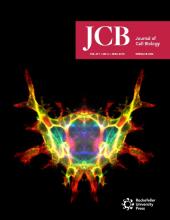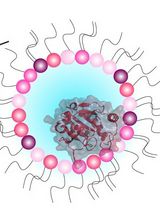- EN - English
- CN - 中文
Detection of Internal Matrix Targeting Signal-like Sequences (iMTS-Ls) in Mitochondrial Precursor Proteins Using the TargetP Prediction Tool
用TargetP预测工具在线粒体前体蛋白中检测内部类基质导向信号序列
(*contributed equally to this work) 发布: 2018年09月05日第8卷第17期 DOI: 10.21769/BioProtoc.2474 浏览次数: 9211
评审: Hassan RasouliAnonymous reviewer(s)
Abstract
Mitochondria contain hundreds of proteins which are encoded by the nuclear genome and synthesized in the cytosol from where they are imported into the organelle. Sorting signals encoded in the primary and secondary sequence of these proteins mediate the recognition of newly synthesized precursor proteins and their subsequent translocation through the mitochondrial TOM and TIM translocases. Proteins of the mitochondrial matrix employ aminoterminal matrix targeting signals (MTSs), also called presequences, that are necessary and sufficient for their import into mitochondria. In most cases, these MTSs are proteolytically removed from the mature part of precursor proteins subsequent to their translocation into the matrix. Recently, internal MTS-like sequences (iMTS-Ls) were discovered in the mature region of many precursor proteins. Although these sequences are not sufficient for matrix targeting, they strongly increase the import competence of precursors by supporting their interaction with mitochondrial surface receptors. Due to their similarity to N-terminal MTSs, these iMTS-Ls can be identified using mitochondrial targeting prediction tools such as TargetP which was initially trained to recognize MTSs. In this protocol we describe how TargetP can be used to identify iMTS-Ls in protein sequences.
Keywords: Internal matrix targeting-signal like sequence (内部类基质导向信号序列)Background
Targeting signals allow the correct intracellular distribution of newly synthesized proteins. Proteins that are transported into their target compartment in a folded conformation often show complex signals that are displayed on the surface of their native, folded structure. These signals are difficult to recognize in the primary sequence since they only can be deciphered when the fold of the native proteins is known.
In contrast, proteins that are threaded through translocases in the membrane of their target compartments in an unfolded conformation typically employ N-terminal signals. This organization allows that protein translocation can commence before translation is completed (Wickner and Schekman, 2005). N-terminal targeting sequences include the signal sequences found on secretory proteins, the transit peptides of chloroplast proteins, the MTSs of mitochondrial proteins and the leader peptides that target bacterial proteins into or across the inner membrane.
Prediction algorithms were developed that recognize and interpret these N-terminal targeting sequences (Juncker et al., 2009). These algorithms can either search for defined characteristic features (such as helicity, hydrophobicity, charge distribution or the presence of specific residues) or they are based on self-learning algorithms that were trained with test sets of proteins of known cellular localizations. One of the latter programs is TargetP which uses the primary sequence of a given protein (in FASTA or text format) to come up with a ‘probability’ score that predicts how likely it is that this sequence starts with a functional matrix targeting sequence (Emanuelsson et al., 2000; Emanuelsson et al., 2007). In the mitochondrial community, TargetP values of larger than 0.6 are typically interpreted as evidence that a given protein is targeted into the mitochondrial matrix.
Recent studies suggested that the important targeting information is not confined to the N-terminal MTS. Obviously, mature parts of proteins are critical for the translocation efficiency in vivo (Yamamoto et al., 2009; Chatzi et al., 2017; Backes et al., 2018). It is known for a long time that strongly folded domains can impede translocation (Eilers and Schatz, 1986; Harner et al., 2011; Schneider, 2018). Hence the unfolding probabilities of cytosolic domains of translocation intermediates strongly influence the velocity and yield of the translocation reaction (Wilcox et al., 2005; Yagawa et al., 2010). On the mitochondrial surface, protein unfolding is supported by cytosolic chaperones and by surface receptors, in particular by Tom70 (Hines et al., 1990; Söllner et al., 1990). The cytosolic domain of Tom70 represents a tetratricopeptide repeat structure which it shares with many co-chaperones of the Hsp90 and Hsp70 chaperone systems (Melin et al., 2015). Indeed, Tom70 cooperates with Hsp90 (in mammals) and Hsp70 (in mammals and fungi) in protein translocation across the outer membrane (Young et al., 2003; Bhangoo et al., 2007; Hoseini et al., 2016; Zanphorlin et al., 2016). It was recently shown that internal sequence stretches that share the typical biochemical properties of mitochondrial presequences support the binding to Tom70 and facilitate protein translocation into mitochondria (Backes et al., 2018, Hansen et al., 2018). Due to their similarity to mitochondrial targeting signals, these internal MTS-like sequences (iMTS-Ls) can be found using the same algorithms that are predicting mitochondrial presequences. The only necessary change one has to make is to relieve the restriction of analyzing only the N-terminus of a given protein, but iterate through the complete amino acid sequence. In this protocol, we explain how TargetP (or a similar tool) can be used to detect and analyze these iMTS-Ls protein sequences of interest. This will be helpful to analyze the features of mature regions of mitochondrial proteins and to estimate their import competence using a simple in silico test. We provide step-by-step instructions for three alternatives that contrast the different settings in data analysis. Depending on linking and scientific background, the detection of iMTS-Ls can be performed using either spreadsheet software (e.g., Microsoft Excel), a language and environment for statistical computing (R) or a general-purpose programming language (F#). While dedicated analysis platforms are the common choice in the field there is an advent for easy and intuitive general-purpose languages to facilitate the integration of the data analysis tasks into production tools and web apps or smooth the linkage of processing with high computational demand and statistical analysis.
Equipment
- Computer or laptop with Internet access
Note: It should work for all common operating systems. However, certain restrictions might apply for specific operating systems. For a standard analysis, any contemporary hardware setup (desktop or notebook) should be suited for a reasonably fast result.
Software
In order to use the scripts provided within this protocol, at least one of the following software packages has to be installed:
- Microsoft Excel or R
A spreadsheet such as Microsoft Excel, F# (https://fsharp.org/) with the libraries FSharp.Plotly and Fsharp.Stats, or R (www.r-project.org) with its packages seqinr, signal and Biostrings (Pagès et al., 2018). - TargetP 1.1 Server or TargetP package
The TargetP algorithm (Emanuelsson et al., 2007) can be used via the interface at the TargetP 1.1 Server (http://www.cbs.dtu.dk/services/TargetP/). Alternatively, the TargetP package can be downloaded and used offline. See the instructions as described here: http://www.cbs.dtu.dk/services/TargetP/instructions.php. For the procedure explained here in this protocol, the online version is sufficient and the installation of the stand-alone software package is not required. However, this stand-alone package offers the possibility to assess large data sets (for example a genome-wide analysis) which is hardly possible with the online service.
Procedure
文章信息
版权信息
© 2018 The Authors; exclusive licensee Bio-protocol LLC.
如何引用
Readers should cite both the Bio-protocol article and the original research article where this protocol was used:
- Boos, F., Mühlhaus, T. and Herrmann, J. M. (2018). Detection of Internal Matrix Targeting Signal-like Sequences (iMTS-Ls) in Mitochondrial Precursor Proteins Using the TargetP Prediction Tool. Bio-protocol 8(17): e2474. DOI: 10.21769/BioProtoc.2474.
- Backes, S., Hess, S., Boos, F., Woellhaf, M. W., Godel, S., Jung, M., Muhlhaus, T. and Herrmann, J. M. (2018). Tom70 enhances mitochondrial preprotein import efficiency by binding to internal targeting sequences. J Cell Biol 217(4): 1369-1382.
分类
生物化学 > 蛋白质 > 结构
细胞生物学 > 细胞器分离 > 线粒体
生物化学 > 蛋白质 > 结构
您对这篇实验方法有问题吗?
在此处发布您的问题,我们将邀请本文作者来回答。同时,我们会将您的问题发布到Bio-protocol Exchange,以便寻求社区成员的帮助。
Share
Bluesky
X
Copy link
















